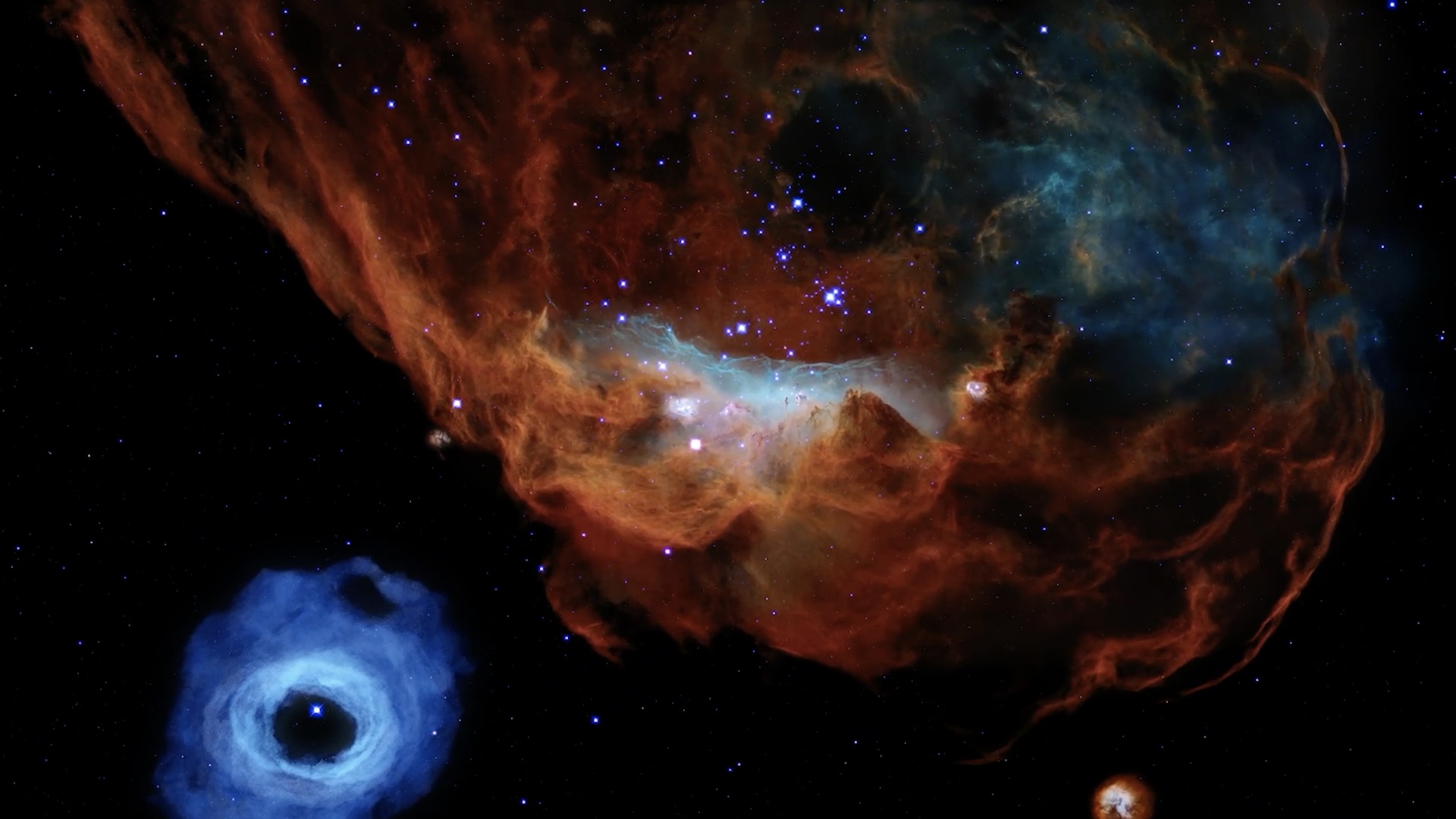From Interstellar Space

The first interstellar object ‘Oumuamua passes through our solar system.
Our first known visitor from interstellar space was an asteroid named 'Oumuamua (pronounced oh MOO-uh MOO-uh), which is Hawaiian for "a messenger from afar arriving first." 'Oumuamua was first detected in October of 2017 by the University of Hawaii's Pan-STARRS1 telescope, which is part of NASA’s Near-Earth Object Observations program. After its discovery, researchers around the world turned their telescopes toward it. 'Oumuamua is a rocky, cigar-shaped object with a somewhat reddish hue. Up to one-quarter mile (400 meters) long, it is perhaps 10 times as long as it is wide. That aspect ratio is greater than that of any asteroid or comet observed in our solar system to date. It spins as it travels and does not have a dust cloud. Based on their observations, researchers believe 'Oumuamua is dense, comprised of rock and possibly metals, has no water or ice, and that its surface was reddened due to the effects of irradiation from cosmic rays over hundreds of millions of years. While its elongated shape is quite surprising, and unlike asteroids seen in our solar system, it may provide new clues into how other solar systems formed. The Hubble Space Telescope observed 'Oumuamua and determined that the trajectory of the asteroid would lead it outside our solar system. Currently ‘Oumuamua is farther away from the Sun than Jupiter and will pass outside Neptune’s orbit in 2022. Watch the video to learn more.
The Hubble Space Telescope found that ‘Oumuamua gained a speed boost when passing through the inner solar system.

'Oumuamua passed through the inner solar system in late 2017 and early 2018.

As 'Oumuamua rotated through space, scientists used its varied brightness every 7-to-8-hour period to deduce its shape.
For More Information
Credits
Please give credit for this item to:
NASA's Scientific Visualization Studio, Hubble, JPL, STScI, the Canada-France-Hawaii Telescope in Hawaii, the Gemini South Telescope and the European Southern Observatory/M. Kornmesser
-
Producer
- Katrina Jackson (USRA)
-
Writer
- Rebeca Guillen (Experiential Learning Program, UMD)
Release date
This page was originally published on Monday, December 9, 2019.
This page was last updated on Wednesday, May 3, 2023 at 1:45 PM EDT.

![YouTube/web videoWatch this video on the NASA Goddard YouTube channel.Music credit: "Midlands" by Marc Barrachina Sanchez [SGAE]; El Murmullo Sarao SGAE, Universal Sarao SGAE; SaraoMusic; Killer Tracks Production Music](/vis/a010000/a012900/a012988/hubble_oumuamua_thumbnail.png)